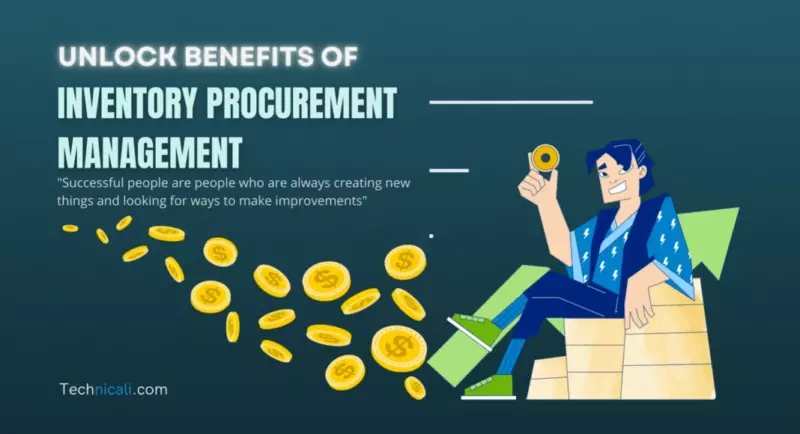Optimising inventory procurement management is the key to improving efficiency, reducing costs and enhancing customer satisfaction for any business. This blog post will cover its essential elements and difficulties while managing it, along with examples of successful execution of this process. The synergy between supply chain coordination and inventory control has been observed in businesses implementing effective systems, thus leading to streamlined operations paired with happy customers.
Inventory refers to the stock of goods that a business holds for reselling or production. It can include raw materials, work-in-progress, finished products, and components. Inventory management involves overseeing the movement and storage of inventory within a business. Inventory procurement management refers to the process of acquiring and managing inventory for a business. It consists in deciding what inventory items to purchase, when to purchase them and how much to buy. Effective inventory procurement management considers factors such as lead times, supplier quality, pricing, and inventory levels required to meet customer demand.
Contents
- 1 Key Takeaways
- 2 The Synergy of Inventory and Procurement Management
- 3 Key Components of Inventory Procurement Management
- 4 Implementing an Inventory Procurement Management System
- 5 Overcoming Challenges in Inventory Procurement Management
- 6 Measuring Success in Inventory Procurement Management
- 7 Real-World Examples of Successful Inventory Procurement Management
- 8 Summary
- 9 Frequently Asked Questions
Key Takeaways
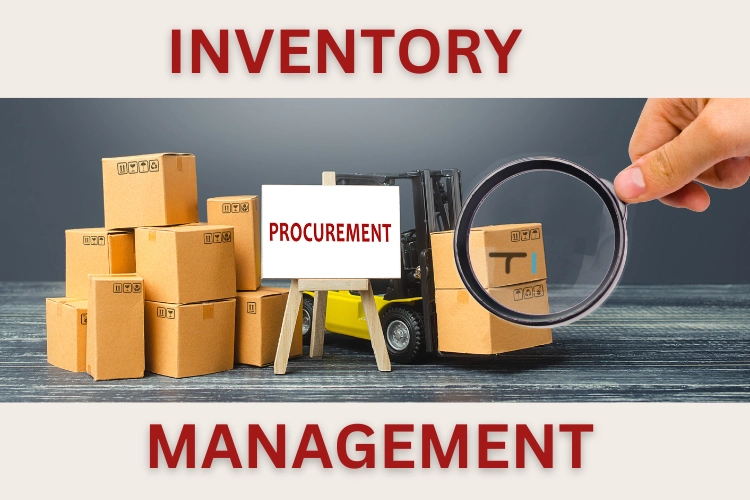
- Inventory and Procurement Management work together to create a streamlined supply chain.
- Critical components, such as demand forecasting and supplier performance analysis, enable businesses to acquire the right products cost-effectively.
- Implementing an inventory procurement management system can reduce costs, streamline processes, improve customer satisfaction & optimise efficiency.
The Synergy of Inventory and Procurement Management
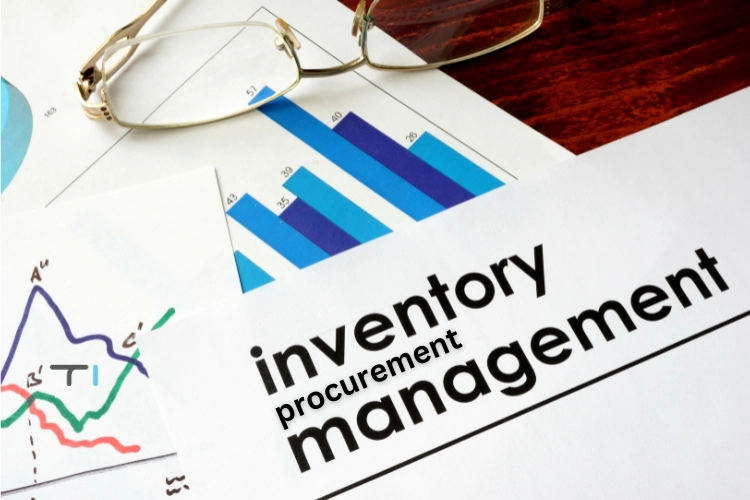
Inventory management and procurement can be synergised to help streamline the supply chain. This is done by determining what raw materials or products are required for customer demand, thus minimising the risk of holding too little or excess inventory while optimising the whole process. A procurement system solution may enhance operations by automating ordering, tracking and managing inventories. Improving overall performance with both inventory control as well as efficient stock acquisition. The two will work together to enhance effective asset management, leading towards a functioning supply chain on all levels within any business dealing in such sectors.
The Role of Procurement in Inventory Management in ERP
Inventory management is an essential component of Enterprise Resource Planning (ERP) systems. Procurement improves the performance of supply chains by organising supplier administration and buying procedures. Automation, which simplifies ordering, following up on orders and controlling inventory stock levels, contributes to procurement’s capability in improving overall efficiency and meeting objectives related to inventory control.
With the ERP system’s amalgamation between procurement and inventory activities, companies can accurately forecast their needs regarding inventories while simultaneously securing better prices from suppliers through a cost-effective process that leads towards optimising the whole chain operation, creating higher competitiveness for businesses in general.
The Impact of Inventory Management on Procurement
Inventory management plays an essential role in helping businesses optimise their procurement operations. With effective monitoring, business owners can determine accurate data for buying decisions and minimise discrepancies with stock levels. The aim is to be able to fulfil customer needs while also keeping costs low by maintaining optimal inventory supplies, thus improving the efficiency of both purchasing strategies as well as the supply chain network overall. When there are no shortages or overstocking issues, customers will receive a higher level of satisfaction, which benefits all involved parties at various levels, financially and otherwise.
Key Components of Inventory Procurement Management
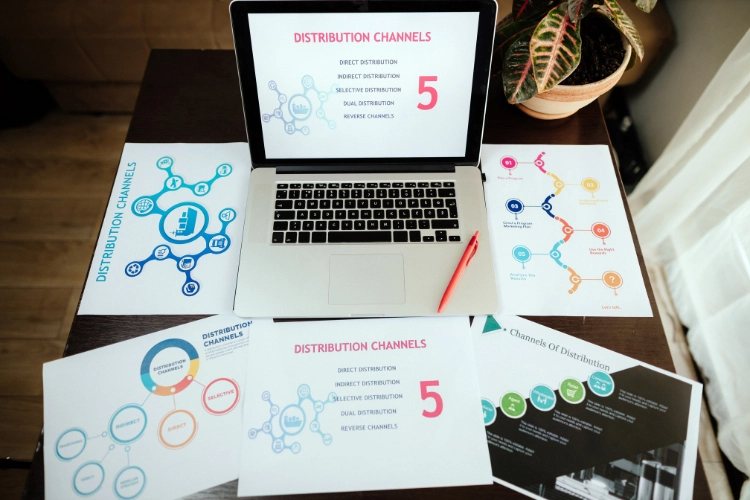
Optimising the inventory procurement management process is essential for successful supply chain operation and cost savings. Several components need to be efficiently managed, such as demand forecasting and planning, supplier performance analysis with enterprise tools, and proper implementation of inventory control techniques to effectively maintain stock levels while reducing costs associated with purchasing management. Understanding these essential elements can help improve efficiency by allowing businesses to optimise their inventory levels and strengthen relationships between suppliers. Taking into account each component of inventory procurement is paramount when it comes time to maximise benefits from a streamlined supply chain via optimised procedures related to procurements.
Demand Forecasting and Planning
Inventory management requires demand forecasting and planning to effectively anticipate inventory needs and adjust procurement strategies. This process includes collecting data, analysing it, and predicting customer demands in order to adapt purchasing practices accordingly with a view towards achieving cost savings while also sustaining appropriate stock levels for meeting customers’ expectations in terms of delivery dates, etc. Although this presents challenges such as accurately measuring consumer demand or allocating suitable lead times for deliveries, overcoming these is essential so that businesses maintain optimal inventories while improving the overall efficiency of their supply chain operations.
Supplier Performance Analysis with Enterprise Planning Tools
Supply chain optimisation and the strengthening of supplier relationships rely heavily on performing effective analyses of supplier performance. Companies can employ enterprise planning tools to evaluate suppliers, gathering data-driven insights for assessing various indicators such as delivery reliability, quality metrics, cost savings and risk management. Such analysis yields essential information regarding areas needing improvement while optimising supply chain operations with more reliable procurement at a reduced price point. Through leveraging these analytical methods, organisations benefit from increased efficiency when making decisions related to their suppliers’ performance – aiding in delivering higher levels of service at an improved rate overall.
Inventory Control Techniques
Inventory control is essential to maintaining optimal stock levels and controlling inventory expenditure. Different methods of management, such as Economic Order Quantity (EOQ), Minimum Order Quantity (MOQ), ABC Analysis, and Just-in-Time (JIT), are some techniques that can be implemented by companies in order to maximise efficiency while reducing costs associated with procurement management. For instance, utilising EOQ helps identify the ideal number of goods to procure at one time in order to reduce ordering frequency and carrying cost expenses relating to inventory storage. JIT assists businesses when it comes to stocking only necessary items needed right away instead of stockpiling an excessive amount upfront which may incur additional fees over time. Incorporating these techniques into a business’s overall strategy for managing their levels will not just cut down on overhead spending but also help increase productivity through improved effectiveness across departments involving procuring new materials or supplies, often related to inventory maintenance processes.
Implementing an Inventory Procurement Management System

As businesses grow and advance, introducing an inventory management system – particularly one focused on procurement processes – is a must. This step aids in simplifying stock control by allowing firms to optimise their acquisition operations while also reducing expenditure and bettering customer satisfaction levels. Successfully undertaking this endeavour requires several vital actions: analysing the features of the proposed systems, joining them with existing protocols, preparing training for personnel involved, and providing any necessary support after implementation so that overall effectiveness can be reached successfully.
Evaluating System Features
When choosing a procurement management solution for inventory, businesses should take into account automation benefits, real-time data availability and integration potential. Assessing system features is critical to make sure the selected solution meets the needs of that particular company.
Automation can improve the whole purchasing process. It helps avoid errors while increasing accuracy and may lead to reduced stock costs over time. Such advantages include access to up-to-date information, which facilitates sound decisions as well as more precise forecasting results. Effective integration capabilities enable companies to connect their inventory operations with other systems, such as ERP or CRM, in order to streamline workflow processes.
Integrating with Existing Processes
Integrating an inventory procurement management system seamlessly into existing operations is the key to a successful implementation. This combination of accuracy and process optimisation will result in more efficient control over inventories as well as purchase activities.
To guarantee that this integration happens, businesses must follow these steps: firstly, identify current processes; secondly, assess compatibility between the two systems; thirdly, set up demands for seamless connection; fourthly, tailor the new system so it runs smoothly with pre-existing ones before transferring data from one program to another. Finally, ensure all work correctly by testing and validating every assimilation stage.
With proper synchronisation, enterprises are able to boost effectiveness when controlling their stocks or acquiring goods while concurrently increasing total performance productivity at a large scale, too.
Training and Support
Employees must be provided with adequate training and continual support in order to fully exploit the advantages of an inventory procurement management system. This will ensure they are suitably skilled and educated for correctly managing inventory, streamlining stocking processes, joining up existing systems, greater efficiency & accuracy levels, as well as continually improving performance.
Such comprehensive training & ongoing backing allow personnel to effectively use the platform, which ultimately results in cost savings through increased productivity alongside improved client satisfaction.
Overcoming Challenges in Inventory Procurement Management
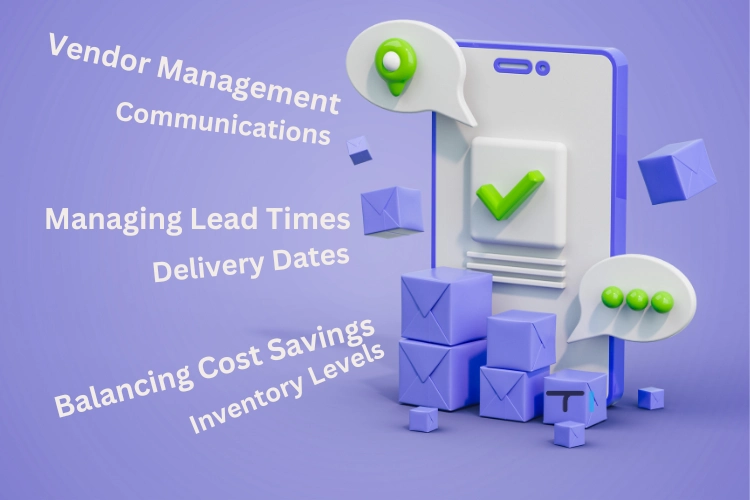
Inventory procurement management presents a range of hurdles that must be overcome in order to optimise supply chain operations and keep customers satisfied. An effective approach for managing this entails developing solid vendor ties, adjusting purchasing plans, and moderating lead times and delivery dates whilst also balancing out inventory levels with cost savings. This way, organisations can have the best possible stock amount at minimum costs, which should enable them to satisfy customer requirements effectively. Let’s take an analytical look into these challenges and how they could be dealt with successfully.
Vendor Management and Communication
Efficient vendor management and communication are of the utmost importance for fostering positive supplier ties and obtaining better arrangements in procurement. Constructing open lines of communication, formulating standards for measuring performance, and observing vendors’ progress all play an important role in successful vendor control.
By preserving solid relationships with suppliers, companies can haggle over lower prices as well as secure more significant quantity discounts while guaranteeing timely delivery to customers – resulting in increased effectiveness savings on cost expenditures coupled with customer satisfaction growth.
Managing Lead Times and Delivery Dates
The timely procurement of goods and reduction in the risk of stockouts or too much inventory are dependent on accurate lead times and delivery dates. By effectively managing these two aspects, businesses can benefit from meeting customer expectations, optimising operations, improving demand forecasting techniques for better inventory level control, and minimising costs. Challenges may arise due to supplier reliability or inadequate methods used when it comes to handling inventories and predicting sales figures, all that needs addressing if companies wish to run their supply chain with maximum efficiency.
Balancing Cost Savings and Inventory Levels
Maintaining a balance between cost-cutting and inventory is fundamental for companies so they can cut down expenses without compromising the quantity of products needed to meet customer expectations. Such methods as forecasting demand, conducting supplier performance assessments with organisational planning systems, and utilising stock management techniques will aid in deciding upon ideal inventory levels and help maximise expenditure savings.
By cleverly managing cost savings alongside their inventories, firms are able to decrease excess usage while also improving productivity and sustaining customers’ contentment -leading eventually towards an effective procurement procedure system overall.
Measuring Success in Inventory Procurement Management
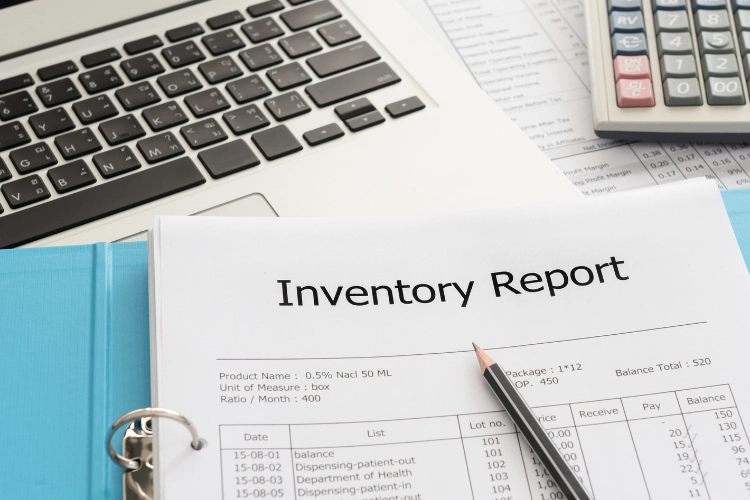
It’s essential to monitor inventory procurement management performance through specific key performance indicators such as order accuracy, cost reduction and the inventory turnover ratio. This way, organisations can understand their current efficiency of procedures and identify potential areas for improvement. By collecting data points on these metrics regularly over time, companies are able to make informed decisions that enhance their inventory practices while also tracking progress along the way.
By examining closely how successful a business is in managing its stock, it will become much easier for them to optimise both procuring strategies and processes related to handling resources, all leading towards continual betterment in output rates eventually.
Inventory Turnover Ratio
The inventory turnover ratio is a measure of how well a company manages its stock. When the ratio is high, it indicates effective use of inventory and strong sales. When low, weak sales are present, as well as too much-unused merchandise on hand. Calculating this metric requires dividing the cost of goods sold by the average value of inventories over an established period to effectively monitor changes in stocks and optimise procurement management for improved overall efficiency. Keeping track and augmenting the rotation rate with regard to supplies can help attain successful inventory control operations.
Order Accuracy and Fulfillment Rates
It is essential to examine order accuracy and fulfilment rates in relation to procurement and inventory management processes, as customer satisfaction and loyalty can be significantly impacted. Keeping a precise rate of completion lowers the costs related to incorrect orders, such as refunds or returns. The data gathered from accurate order fulfilment provides beneficial insight into consumer demand & stock levels that assist when planning inventory forecasts& maximising efficiency within the operating activities of procurement operations. Monitoring these metrics supports businesses in recognising opportunities for improvement, ensuring cost-effectiveness while managing their inventories more effectively.
Cost Reduction and Savings
The efficacy of inventory procurement management can be gauged by its ability to reduce costs and enhance savings. To realise these results, businesses should focus on tactics such as optimising their stock amounts, negotiating lower prices with vendors and automating processes through technology.
Tracking cost reduction/savings permits the evaluation of current strategies being implemented for procurement management. Ultimately helping identify areas for growth while allowing continual optimisation leading towards improved overall efficiency in regards to inventory and procurement-related costs.
Real-World Examples of Successful Inventory Procurement Management

Procurement management and efficient inventory levels have been successfully achieved by industry powerhouses such as Samsung, Amazon, Ikea and Dell. These corporations use strategies like ordering the optimum amount of goods with timely planning processes alongside automated technological systems to obtain great gains in terms of cost savings and customer satisfaction. By effectively implementing an efficient procurement management system along with effective inventory control measures, these successful companies showcase how invaluable it is for businesses seeking maximum profits.
Summary
By understanding how inventory and procurement management systems can work together to optimise the supply chain, reduce costs, and improve customer satisfaction. Businesses can move towards improved overall efficiency. To do this effectively, they must implement critical components of a successful system, overcome any challenges along the way and measure success at regular intervals in order to ensure long-term gains from their investment in these processes. Take action now for maximum benefit, and start optimising your inventory procurement management today!
Frequently Asked Questions
What is inventory procurement?
Procurement in inventory management is the purchase of necessary commodities or raw materials to maintain stock levels and meet demand. It plays an essential role in ensuring successful inventory management.
What is the role of inventory management in procurement?
Inventory management is an integral part of procurement, entailing the selection and adjustment of inventory levels in line with fluctuating demand. To ensure a sufficient supply when there are varying requirements, procurers should maintain greater stocks of raw materials or partially manufactured products (work-in-progress). This way, all necessary items will be available at any given time.
What are the 4 types of inventory?
Proper inventory management is essential for any business. Splitting the stock into categories like Raw Materials, Work-in-Process (WIP), Finished Goods and Maintenance, Repair and Overhaul (MRO) Items enables efficient tracking of all inventories. This helps to ensure that there is always an appropriate amount available when needed while also keeping it stored in a sensible manner. It’s important that keywords such as ‘inventory’ or ‘raw materials’ are kept track of at all times so everything runs smoothly.
Does inventory fall under procurement?
Inventory management is a part of the procurement process that allows organisations to better manage their supply chain. By keeping track of inventory, businesses can take control of procuring necessary resources and materials in an efficient
How do demand forecasting and planning help in inventory management?
Forecasting and planning customer demand enables companies to prepare the necessary inventory levels so as to be able to meet consumer requirements. By anticipating stock needs, businesses are better equipped to meet their customers’ demands.
